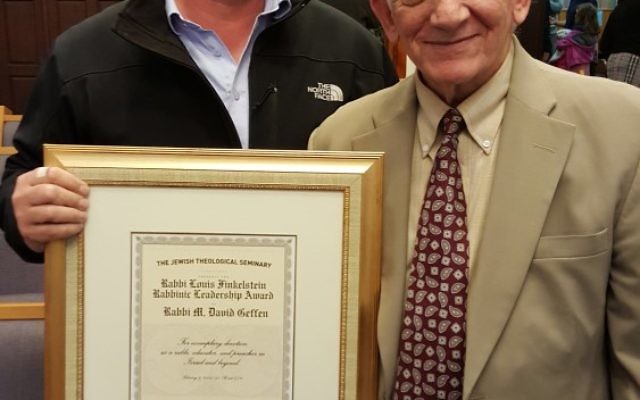Creativity Made Kotel, Arch Work for All
By Rabbi David Geffen
In Israel one of the places where many b’nai mitzvah are held is the Kotel. For Israelis there is a basic fact of the society: A large majority of Israelis are not affiliated with synagogues, but they want their children to have the bar or bat mitzvah experience.
For many years it was possible to have only the boys celebrate at the Kotel. Now there is an area — archeological garden, south wall — where women and men can be together for a service and clearly for a bat mitzvah. Personally, I was involved in this entire process for girls and boys because I officiated at over 40 b’nai mitzvah ceremonies for families from abroad at the Kotel between 1979 and 1992. For me, it was a way to earn extra money, which I needed to support my family, and, from a spiritual point of view, I found it most meaningful.
One story defines what I tried to do at these services. First, this is a description of one bar mitzvah. My name was known to an American rabbi who made aliyah right after the Six-Day War. His entire career in Israel for almost 50 years was conducting a bar mitzvah for a young man from outside Israel whose family was moved to bring him to the country for his 13th birthday.

Rabbi David Geffen and his oldest son, Avie, who lives in Beit Herut, attend a Jewish Theological Seminary of America event in February.
The rabbi who was the professional in the field called me up one day: “David, are you free both on Thursday and Shabbat for a bar mitzvah? This is unusual: These are triplets whose parents want them to experience the Kotel and Mount Scopus.” When he suggested the idea, I was readily agreeable.
At the Kotel, I arrived at 6 in the morning to make sure my table for the service was right in the back corner of the Kotel plaza. Then the barrier there separating men and women was low, so I used that space opportunity for a significant purpose.
The women in the family were on the women’s side right next to where the triple bar mitzvah was to be held. As each of the triplets had an aliyah, I read the portion three times so there could be numerous aliyot because the family was large. Once I had blessed each young man as he stood with his father, he then moved to where his mother could actually touch him, and I made another prayer at that wonderful moment.
On Shabbat I stayed with friends near Mount Scopus. I borrowed a sefer Torah from the Conservative-Masorti synagogue in French Hill. I carried the Torah to a spot on Mount Scopus near Hebrew University. Looking out over a magnificent Jerusalem, the triplets celebrated their bar mitzvah in a setting never to be forgotten.
This is one bat mitzvah tale.
Over the years I officiated at a few b’not mitzvah on Masada and in other locations in the Old City where the Kotel was visible. However, I was aware that the archaeological garden surrounding Robinson’s Arch and the southern wall was still being developed. Back then there were large boulders and a few paths, but there was an open space under the arch.
I developed my own plan for how to make use of the area.
I first got to know the guard at the entrance to the archaeological garden, then easily accessible from the road coming from the Dung Gate into the Kotel plaza and the Kotel itself. Since the wall at Robinson’s Arch is actually a continuation of the Kotel itself, I decided that was the place for a bat mitzvah.
I informed the guard a day or two before to let him know that I was bringing a small group for a visit. From a synagogue where I was affiliated, I borrowed a sefer Torah. I also borrowed siddurim with English and Hebrew, plus folding chairs, which I gave to the family to bring.
I arrived early for the bat mitzvah with a folding table, a cover for it and the Torah.
I figured out a system with a wheel device for the table and covering, and I carried the scroll itself. The family brought the chairs and the siddurim and some tallesim, which I had acquired through the years.
Not sure what the guard thought, but I gave him a tip on each occasion, so he was glad to assist.
There under Robinson’s Arch, at one of the best-known portions of the wall but not in the actual Kotel section, we held a Shacharit service. At her home synagogue the young woman had been taught the portion of the sedra recited on the weekday. She read, and two family members were called to the Torah.
Then I intoned her name for her portion. With much of the history of the Temple of old, the arch hanging over her, she recited the blessings and read her portion.
For me, it was always so pleasing that families would bring their sons and daughters to Israel for the sacred celebration at the Kotel. It had great meaning for me, and I tried to convey the uniqueness of each bar and bat mitzvah in a special way.
I have been blessed to live in Israel, but I also have had a chance to help others in their spiritual quest.




comments